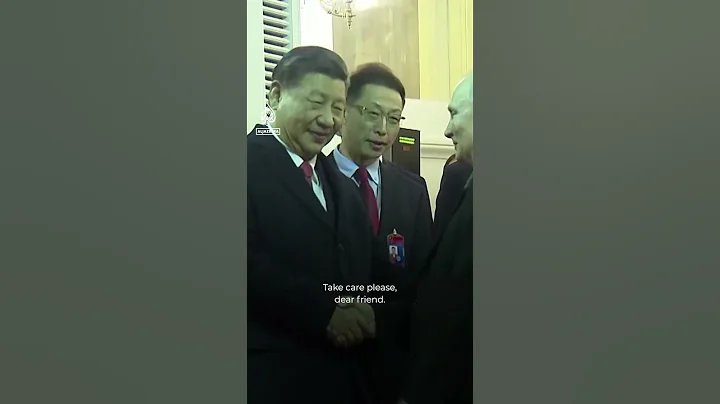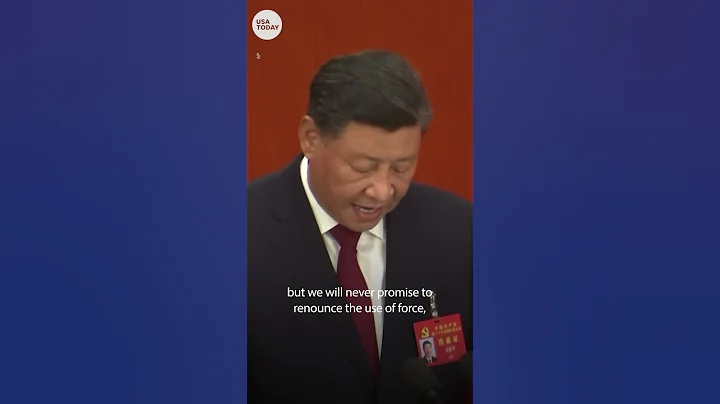Source: People's Daily - People's Daily

Picture ①: Huang Fan at work. Photo provided by interviewee Picture ②: Huang Zhen and the return capsule of the new generation manned spacecraft test ship. Photo provided by the interviewee Picture ③: Lu Qi (right) communicates with the staff in the imaging technology virtual studio. Photo by Wang Quanchao (People’s Vision) Layout design: Zhang Danfeng
Opening words
Since the 18th National Congress of the Communist Party of China, the Party Central Committee with Comrade Xi Jinping as the core has stood at the strategic height of passing on the development of the party and the country and caring for the growth of young people. Become talented and plan youth work development and progress. The vast number of young people actively innovate and create, becoming a vigorous force driving the Chinese nation to accelerate its great rejuvenation. This edition launches the "Innovation and Creation, Outstanding Life" series, which focuses on young people from all walks of life and provides in-depth reports on their courage to innovate and create and their continuous achievements.
Self-reliance and self-reliance in science and technology are the foundation of a country's strength and security. Achieving high-level scientific and technological self-reliance and promoting high-quality development of requires especially the spirit of innovation.
has such a group of young people who keep an eye on the forefront of science and technology, focus on the national development strategy and the people's needs for a better life, work hard on basic research, major projects, and key projects, display their talents, and achieve excellence in life through youthful endeavors. Recently, the reporter approached three young backbones on the front line of scientific research and listened to their stories.
Huang Zhen:
"Being able to combine personal ideals with the needs of the country is the greatest happiness in life."
He has participated in the development of many major national engineering projects such as the Shenzhou spacecraft , the new generation manned spacecraft, and the lunar lander. and mission implementation, leading the team to design important technical solutions such as the docking, manual rendezvous and docking, and orbiting of the Shenzhou spacecraft and the space laboratory... Even though this post-80s generation is not very young, he is an "old man" in aerospace engineering. It is Huang Zhen, deputy chief designer of the General Design Department of the Fifth Academy of China Aerospace Science and Technology Corporation.
Huang Zhen’s association with aerospace began in 2003. At that time, he was a junior in the Department of Physics at Peking University. That year, my country's first manned spacecraft, Shenzhou 5, was successfully launched, and the whole country was jubilant. The roaring flames on the TV screen ignited Huang Zhen's dream. After graduating from
with his undergraduate degree, Huang Zhen came to the Fifth Academy of China Aerospace Science and Technology Corporation to study for his master's and doctoral degrees. In 2010, Dr. Huang Zhen graduated and the first task he took over after working was to determine the window time for the rendezvous and docking of Shenzhou-8 and Tiangong-1. "At that time, he didn't get off work until after 12 o'clock every night, and he didn't take a day off for more than a year." His lover Guan Meizhu said that after returning home, questions were still swirling in his mind.
Hard work pays off. Through calculations of orbital dynamics and launch trajectories, Huang Zhen finally proposed a method that can accurately calculate the launch time of the Shenzhou spacecraft, with an accuracy of one thousandth of a second. "3, 2, 1, ignite!" Following the commander's order, the rocket lifted Shenzhou 8 and flew steadily into space. Witnessing this scene, he was extremely excited: "Being able to combine personal ideals with the needs of the country is the greatest happiness in life!"
"There is no room for relaxation in the aerospace career, and there is no room for any mistakes." The longer he works, the more Huang Zhen becomes. The deeper the experience. When undertaking the rendezvous and docking tasks between Shenzhou 9 and Tiangong 1, Huang Zhen went to the experimental platform to practice every day in order to find the optimal operation method. In more than half a year, he produced a manual rendezvous and docking plan of more than 100 pages.
During rendezvous and docking, astronauts must aim at the bullseye of the cross target to operate the docking handle. However, in space, the shadow produced by the rotation of the sun's rays will block the bull's-eye, causing the docking to lose accuracy. what to do? Huang Zhen came up with a "stupid" method: draw an dot matrix , and then compare the different angles of the sun at various times of the day, and use the sun altitude angle method to project onto any lattice to analyze various Calculate the occlusion situation. In order to verify the results calculated by the software, he made many paper shell models at home and repeatedly checked them using a flashlight as a projection.
In June 2012, after Shenzhou 9 completed the rendezvous and docking in space, Huang Zhen compared the actual operation images with his own plan during review."The shadow images displayed line by line in the code are compared frame by frame with the actual images taken in the sky. They are completely consistent!" The docking was a great success. Huang Zhen was extremely happy in his heart. "This feels very good!"
Task after task One after another. In 3 years, Huang Zhen led the team to successfully launch a new configuration of multi-purpose spacecraft scaled-down return capsule, pioneering the uncontrolled free flight strategy. The return performance was 55% higher than that of the Shenzhou spacecraft; it took another 4 years to build a full-scale 20 The multi-ton new generation manned spacecraft test ship successfully carried out a high-speed re-entry flight test in May 2020. It returned to the earth from an altitude of 8,000 kilometers for the first time. The landing point accuracy reached 10.8 rings, and the comprehensive technical indicators reached the international advanced level... "We have achieved a leap in the new generation of manned spacecraft technology from 'following' to 'running parallel' and then to partially 'leading'." Huang Zhen's words were full of pride.
With the successful construction of China's space station and the technological breakthrough of the new generation of manned spacecraft, our country has the conditions to carry out manned moon landings. "Let the Chinese people's thousand-year dream of landing on the moon come true as soon as possible!" Leading a team with an average age of 35, Huang Zhen began a new journey of developing a lunar lander.
As one of the youngest deputy chief designers in the field of manned spaceflight in my country, Huang Zhen has successively won the "Outstanding Contributor to China's Manned Spaceflight Project", the Aerospace Innovation Award, and the 26th "China Youth May Fourth Medal" Waiting for honor. "Looking back at the 30 years of manned spaceflight, generations of young people have dedicated their youth and wisdom to this great cause. Now that the baton is in our hands, we can only continue to struggle and serve the motherland with success." Huang Zhen was deeply touched.
Huang Fan:
"Repaying the motherland with more scientific research and innovation is the duty and mission of the young generation of scientific researchers."
Turning on the computer, the real-time scene in the experimental field on the bank of Yangcheng Lake 50 kilometers away is right before our eyes: green fish Deep in the pond, groups of large-eyed, plump bass are swimming briskly in the picture. You can clearly see them feeding, defecating, and spitting foam. Generally speaking, the water in fish ponds is turbid and impenetrable due to feed, aquatic plants, etc. So, how is this high-definition picture achieved?
"Such a picture is not directly 'photographed', but 'calculated'." Huang Fan, head of Suzhou Jiaoshi Intelligent Technology Co., Ltd., told reporters that the secret is hidden in the water installed on the wall of the fish pond. In the lower monitoring sensor - different from the "what you see is what you get" in traditional imaging, this sensor uses laser ranging to collect information from all directions in blurred light and shadow, thereby obtaining an enhanced compressed signal, which is processed after noise reduction Precise algorithm analysis "spells out" clear images. At present, this "black technology" equipment has been spread across all levels of breeding fields at the Suzhou Aquatic Technology Promotion Station, which can achieve precise feeding, timely monitoring, and improve the quality of agricultural products.
In April this year, 35-year-old Huang Fan won the highest award in the finals of the first national disruptive technology innovation competition sponsored by the Ministry of Science and Technology with his "Laser Ranging Imaging System Based on Compressed Sensing Technology" project. "In lidar ranging, in order to distinguish the light sources of different pixels, multiple sensors are usually required, which not only increases the cost but also interferes with each other and weakens the signal. Our technology is to use only one sensor to accept all light sources and restore the image through an algorithm, both It reduces the cost and enhances the signal. "Huang Fan said that in addition to being used in agricultural production, this project is also widely used in fields such as intelligent driving, and can detect objects over 500 meters in harsh environments such as rain, snow, and haze. distance and imaging functions.
Huang Fan is an entrepreneurial young man who returned from studying abroad. He studied as an undergraduate at Huazhong University of Science and Technology . After graduation, he went to France to study. He has been deeply engaged in the fields of laser lighting and imaging and published many influential papers. In 2015, after graduating with his doctorate, he stood at a crossroads in his career.
Should he change his nationality and stay, or should he return to his country to engage in scientific research? “My original intention of studying abroad was to learn and serve the country.” He chose the latter without hesitation.In September of that year, Huang Fan and his classmates participated in the "Win in Suzhou " Innovation and Entrepreneurship Competition (European Station) organized by the Suzhou Municipal Government in France, and won the first prize for their laser sensor project. They became associated with Suzhou and took it with them. Five PhD students returned to China to start their own businesses together. When
started his business, Huang Fan was committed to original innovation, hoping to achieve a breakthrough from "0 to 1". Compared with the standard LED lights and xenon lamps on cars, laser headlights have higher photoelectric conversion efficiency and have broad market demand. The development of high-quality laser car headlights was Huang Fan's first project when he returned to China to start his own business.
"There are no shortcuts to innovation. Scientific research is a process of continuous trial and error. Only by persevering to the end can the future be bright." Huang Fan said that from 2016 to 2019, he and his team members started by studying market positioning and polished the processing technology and technology over and over again. After trying hundreds of materials and making three generations of products, we finally developed an artificial ceramic material that can withstand the impact of strong light, thereby breaking the foreign technology monopoly and achieving industrialization. It not only occupied the largest share of the domestic market in the field of laser headlights , and also exported to overseas markets. Since the founding of
, Huang Fan has attracted a number of returned overseas Ph.D.s to join his team. They all come together and work side by side because of their common scientific research goals and ideals and beliefs of serving the country through science and technology. This young team of nearly 70 people has an average age of only 35 years old.
In May this year, Huang Fan won the 26th "China Youth May Fourth Medal". “It is the duty and mission of the younger generation of scientific researchers to repay the motherland with more scientific research innovations,” he said.
Lu Qi:
"R&D of new technologies cannot be just for economic benefits, but also strive to create more social value."
Although the company is headquartered in Chongqing, Lu Qi only stays here for a few days every month, and spends the rest of the time traveling outside. Lu Qi, born in the 1990s, is a young man from Beijing who serves as the chairman of Dawa Future (Chongqing) Imaging Technology Co., Ltd. and is committed to the research and development of digital technologies such as virtual reality and .
loves to innovate and loves to innovate. He has been different since college. In 2011, Lu Qi won a prize of more than 10,000 yuan in the school innovation competition and began to test the waters of entrepreneurship. Because of her love for virtual reality, Lu Qi decided to enter this field and founded Dawa Future (Beijing) Imaging Technology Co., Ltd. in 2014. At that time, many virtual reality technologies were already mature abroad, but they were not open to the outside world. Many domestic companies often "bought them". Lu Qi was unwilling to do so and was determined to develop independently from the beginning. The road to entrepreneurship for
was not smooth. In the first few years, the company made breakthroughs in technology, but had no market and kept "burning money." "No one believed in us. They felt that this kind of technology could not be mastered by a small start-up company." Recalling the situation at that time, Lu Qi told reporters that the company could not afford to pay the 2,000 yuan electricity bill, so he had to sell cars to "survive."
In 2018, entrepreneurship finally turned around. At that time, Yongchuan District of Chongqing went to Beijing to hold an investment promotion meeting. After some exchanges, Lu Qi hit it off with the local area, and Dawa Chongqing Company was officially established in Yongchuan . All parties provided strong support to help Lu Qi solve the gap in funds, talents and other needs, and the company entered the fast lane of development.
"Real-time Digital Human" is one of the results of their research and development - in a special studio, a staff member wears a complete set of "black technology" equipment, with a total of 57 light-weight devices with reflective points all over his body. Every movement he makes is It can be captured in time and reproduce a virtual self through real-time imaging technology. Lu Qi introduced that "real-time digital people" can be widely used in digital film and television, virtual idols, virtual studios and other fields. Real-time imaging technology can greatly improve the scale production efficiency of film and television, animation, games and other industries, and significantly reduce production costs.
No pain, no gain. In 2019, Lu Qi led Dawa Company to stand out from more than 1,000 bidding companies and participate in the construction of the "70th Anniversary National Day Parade Simulation System" to improve the efficiency of military parade rehearsals.The team also assisted the Beijing Winter Olympics opening ceremony, built a digital deduction and drill system, and used artificial intelligence , virtual reality and other scientific and technological achievements to allow the opening ceremony team to preview the three-dimensional effects of various performance plans and reduce manpower consumption...
Based on her contribution to promoting the healthy development of my country's digital content industry and big data industry, Lu Qi won the 26th "China Youth May Fourth Medal" in May this year. For the future, Lu Qi hopes to build a universal digital framework, open the company's technology to the industry, lower the threshold for technology use, and allow more people to use virtual technology as easily as using a point-and-shoot camera. "The research and development of new technologies cannot be just for economic benefits, but we must strive to create more social value." Lu Qi said. Although
has won many honors and the company has good development momentum, Lu Qi is very modest: "In times of adversity, you know where the difficulties are, but in times of good times, you may face unexpected dangers." He still maintains the vigor and calmness he had when he started, and actively develops New career, look down upon past honors. "Let nature take its course," his WeChat signature said. "People's Daily" (Page 05, July 10, 2022)
















![Letter Series | Logical Reasoning Exam [for CSE MATH College entrance tests] - DayDayNews](https://i.ytimg.com/vi/Ki8s811AALs/hq720.jpg?sqp=-oaymwEcCNAFEJQDSFXyq4qpAw4IARUAAIhCGAFwAcABBg==&rs=AOn4CLDkFiwfqDwGh34yMI9Jve4AMq5UJg)

![ANALOGY | Civil Service Exam sample question [lumabas na dati] Husk is BUNOT - DayDayNews](https://i.ytimg.com/vi/oT-cdiQz0fk/hq720.jpg?sqp=-oaymwEcCNAFEJQDSFXyq4qpAw4IARUAAIhCGAFwAcABBg==&rs=AOn4CLC1dzC5YlnIDGwPsgAnj2ss5EKTzw)


